Exploring Different Running Board Lengths: A Comprehensive Guide
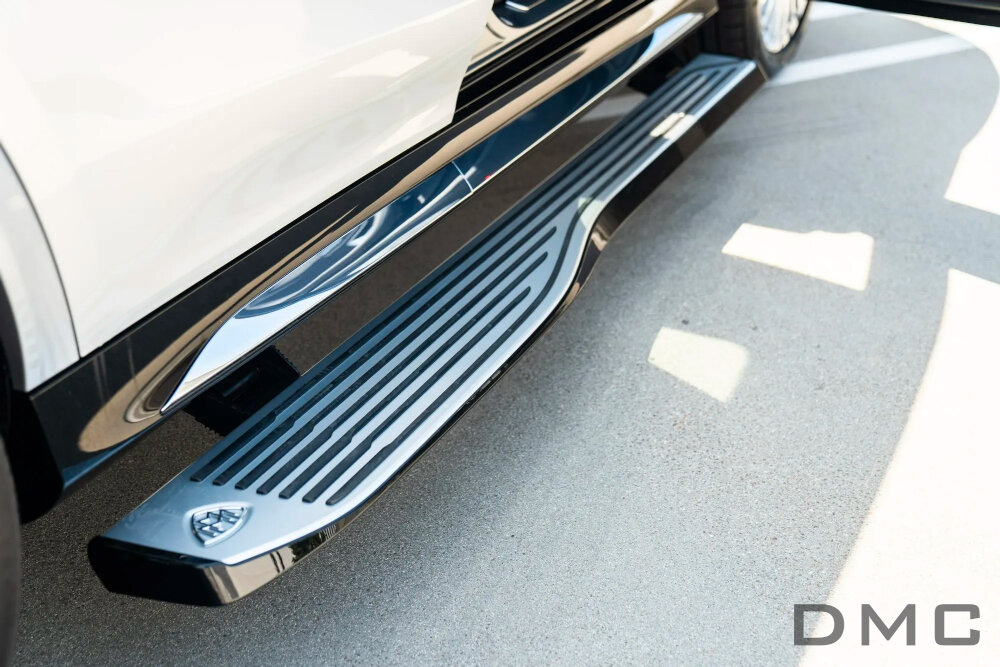
Running boards are a popular automotive accessory that not only enhances the aesthetic appeal of a vehicle but also provides several practical benefits such as easier access to the vehicle and protection against mud, rocks, and debris. However, choosing the right running board length can be a daunting task, as various factors must be considered, such as the type of vehicle, personal preferences, and the intended use of the running boards. Therefore, this comprehensive guide aims to explore different running board lengths and provide valuable insights into their features, advantages, and drawbacks. Whether you own a truck, SUV, or crossover, there is a running board length that suits your vehicle and style. From the classic full-length running boards that extend along the entire length of the vehicle to the sleek and modern shorter ones that provide a subtler look, the options are endless. Additionally, some running boards come with integrated LED lights, non-slip treads, and customizable finishes to cater to different needs and tastes. By delving into the various running board lengths and designs, you can make an informed decision that not only complements your vehicle’s look but also serves your functional requirements. So, let’s dive into this exciting world of running boards and discover the best fit for your vehicle!
Running boards are a type of exterior accessory that is attached to the side of a vehicle, extending outwards from the frame. They are designed to provide a step or foothold for passengers to easily enter and exit the vehicle. Running boards serve a dual purpose of enhancing the look of the vehicle while also providing practical functionality. They are commonly found on larger vehicles such as trucks and SUVs, where the height of the vehicle can make it difficult to climb in and out. The length of running boards can vary depending on the size of the vehicle and the individual’s preference. They can range from short, minimalist designs to longer and more elaborate options that cover a larger portion of the vehicle’s body.
When it comes to running boards, choosing the right length is crucial. The length of a running board can affect the overall look, functionality, and safety of your vehicle. If the running board is too short, it may not provide enough space for passengers to step on and off the vehicle, which can be especially challenging for those with mobility issues. On the other hand, if the running board is too long, it may protrude too far out from the vehicle, causing potential safety hazards. Additionally, the length of the running board can impact the aerodynamics of the vehicle, affecting its fuel efficiency and handling. Therefore, it is essential to consider all these factors before selecting the right length for your running board.
When it comes to running boards, there are a variety of lengths available to choose from. From the standard 6-inch board to the longer 10-inch board, each length provides its own unique set of benefits. Shorter boards are ideal for those who want a sleek and subtle look while still providing a step up into the vehicle. Longer boards, on the other hand, offer more surface area for stepping and provide a more aggressive look. Additionally, longer boards can be more beneficial for larger vehicles, such as trucks and SUVs, as they make entering and exiting the vehicle much easier. Ultimately, the length of the running board you choose will depend on your personal preference and the specific needs of your vehicle.
Short Running Boards
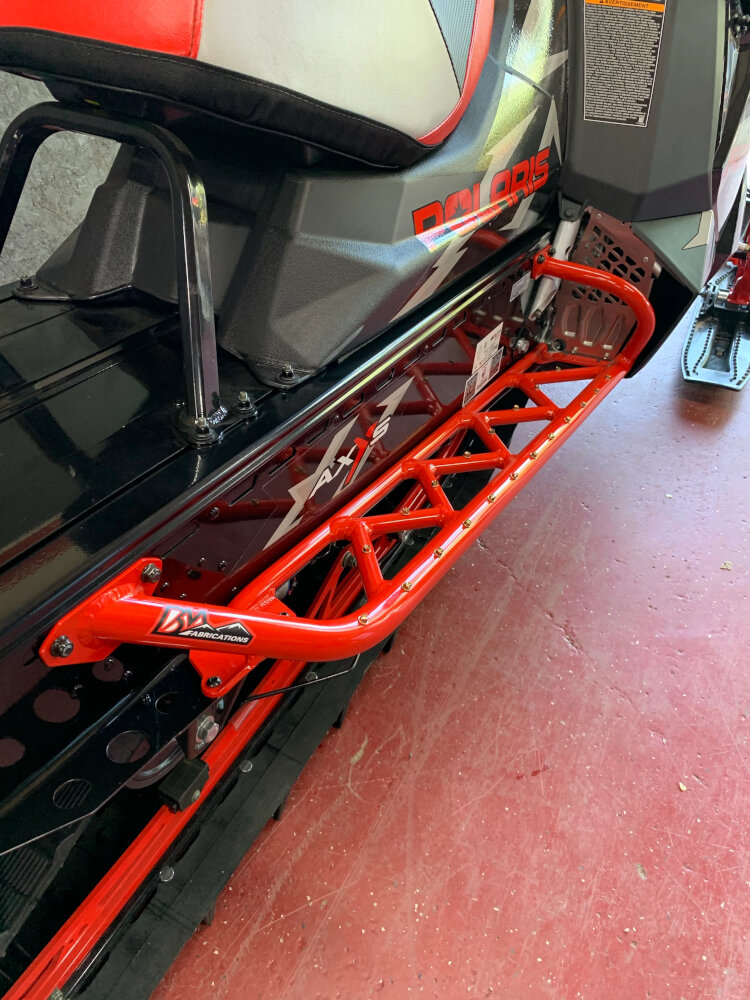
Short running boards are a trendy option among car enthusiasts who want to add a touch of style and functionality to their vehicles. These boards are typically shorter than the standard-sized running boards and are designed to provide a sleek and streamlined appearance to the car. Short running boards are ideal for vehicles with a lower ground clearance, where longer boards may scrape against speed bumps or rough terrain. Additionally, these boards can be a practical solution for drivers who want to improve their vehicle’s accessibility without adding unnecessary bulk. Short running boards are available in a range of materials, including aluminum, stainless steel, and plastic, providing car owners with plenty of options to choose from. While short running boards may not provide as much space as their longer counterparts, they are still a functional addition to any car. These boards can help prevent mud and debris from accumulating on the vehicle’s body, protecting it from scratches and damage. Short running boards can also be useful for passengers who need a stepping platform to enter and exit the car, particularly for those with mobility issues. Additionally, short running boards can be customized with various finishes, patterns, and lighting options, allowing car owners to express their personal style and make their vehicle stand out from the crowd. Overall, short running boards are an excellent choice for drivers who want to upgrade their car’s appearance and functionality, without compromising on performance or maneuverability.
Running boards are the metal or plastic strips that are attached to the side of a vehicle, just below the doors, to help passengers get in and out of the vehicle more easily. These boards come in varying lengths, depending on the make and model of the vehicle, and can also be customized to suit individual preferences. The length of a running board can affect the overall appearance of the vehicle, as well as its functionality. Longer running boards offer more space for passengers to step onto, while shorter ones provide a sleeker look. Other characteristics of running boards include their material, texture, and color, which can all be tailored to match the style and color of the vehicle.
Short running boards, which extend only a few inches out from the vehicle’s body, can have both advantages and drawbacks. On the one hand, they can provide a sleek and streamlined profile that enhances the vehicle’s appearance and aerodynamics. They may also be easier to clean and maintain, as they don’t offer as much surface area for dirt and debris to accumulate. However, short running boards may not offer as much protection for the vehicle’s doors and side panels, and they may not be as effective at helping passengers to enter and exit the vehicle. Additionally, shorter running boards may be less useful for off-road adventures or for vehicles that are frequently driven in areas with high curbs or other obstacles. Ultimately, the decision to use short running boards will depend on the vehicle owner’s priorities and needs.
Short running boards are a great addition to any vehicle that requires a little extra boost getting in and out. Generally speaking, these types of running boards work best on smaller vehicles like sedans, coupes, and compact SUVs. They also work well on vehicles with a lower ground clearance. Short running boards are perfect for those who want to add some style and functionality to their ride without sacrificing ground clearance or fuel efficiency. They offer a sleek, low-profile look that complements the overall design of the vehicle. Additionally, short running boards are a great choice for those who live in areas with inclement weather, as they are less likely to collect snow and ice compared to longer running boards.
Standard Running Boards
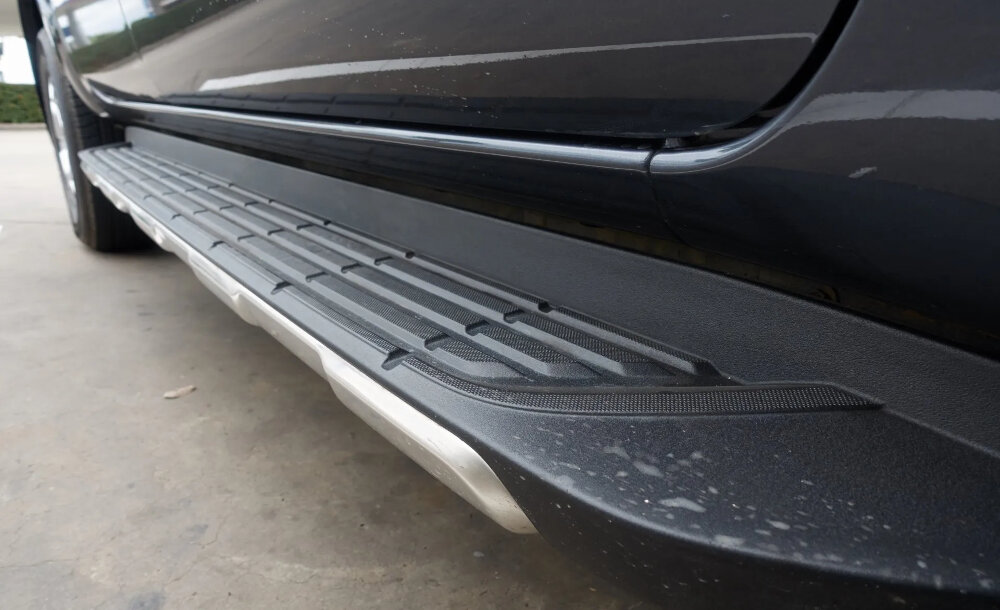
Standard running boards are the most common type of running boards that are installed on vehicles. They are typically made of durable materials such as aluminum, steel or plastic and are designed to provide a sturdy platform for passengers to step onto when entering or exiting a vehicle. Standard running boards are available in a variety of lengths, widths and styles to fit different types of vehicles and to meet the requirements of different drivers. One of the main advantages of standard running boards is that they provide a convenient and safe stepping surface for passengers. They also help to protect the vehicle’s body from rocks, debris and other hazards that can cause damage to the paint or body. Additionally, standard running boards can enhance the appearance of a vehicle and give it a more rugged or sporty look, depending on the style and finish of the running board. They are also relatively easy to install and can be customized with various accessories such as lights, steps or brackets to enhance their functionality. Overall, standard running boards are a practical and stylish addition to any vehicle, providing both form and function.
The running board is a common accessory found in many vehicles, especially in SUVs, trucks or larger vehicles. It is a long, narrow strip or platform that runs along the side of a vehicle, usually between the front and rear wheels. The purpose of running boards is to provide easier access to the vehicle, particularly for passengers and drivers with reduced mobility. Running boards come in different lengths, widths, and materials, which can affect their durability, weight, and style. The length of running boards can range from short ones that only cover the front door area to long ones that extend from the front to the rear wheel, covering the entire side of the vehicle. The choice of running board length can depend on personal preference, the type of vehicle, and the intended use of the running boards.
Standard running boards are a popular choice for many vehicle owners due to their affordability and ease of installation. One of the major advantages of using standard running boards is that they offer a cost-effective way to enhance the appearance of your vehicle while providing an added convenience for passengers getting in and out of the car. Additionally, they can also provide protection to the lower part of the vehicle from debris and rough terrain. However, one drawback of standard running boards is that they may not be suitable for larger vehicles and may not offer enough coverage for passengers with larger feet or mobility issues. Furthermore, they may not provide the same level of durability and quality as other more expensive options, which may lead to faster wear and tear.
When it comes to selecting suitable vehicle types for standard running boards, there are several factors to consider. Firstly, the size of the vehicle is an important consideration. Standard running boards are typically designed for mid to full-size SUVs, trucks, and vans. This is because these types of vehicles have a higher ground clearance, which makes it more challenging to get in and out of the vehicle, especially for shorter individuals or those with mobility issues. Secondly, the type of driving that the vehicle is used for should also be considered. If the vehicle is used for off-roading or rugged terrain, then a more durable and heavy-duty running board may be required. On the other hand, if the vehicle is primarily used for city driving, then a standard running board may be sufficient. Ultimately, the suitability of a vehicle type for standard running boards will depend on the specific needs and preferences of the driver.
Extended Running Boards
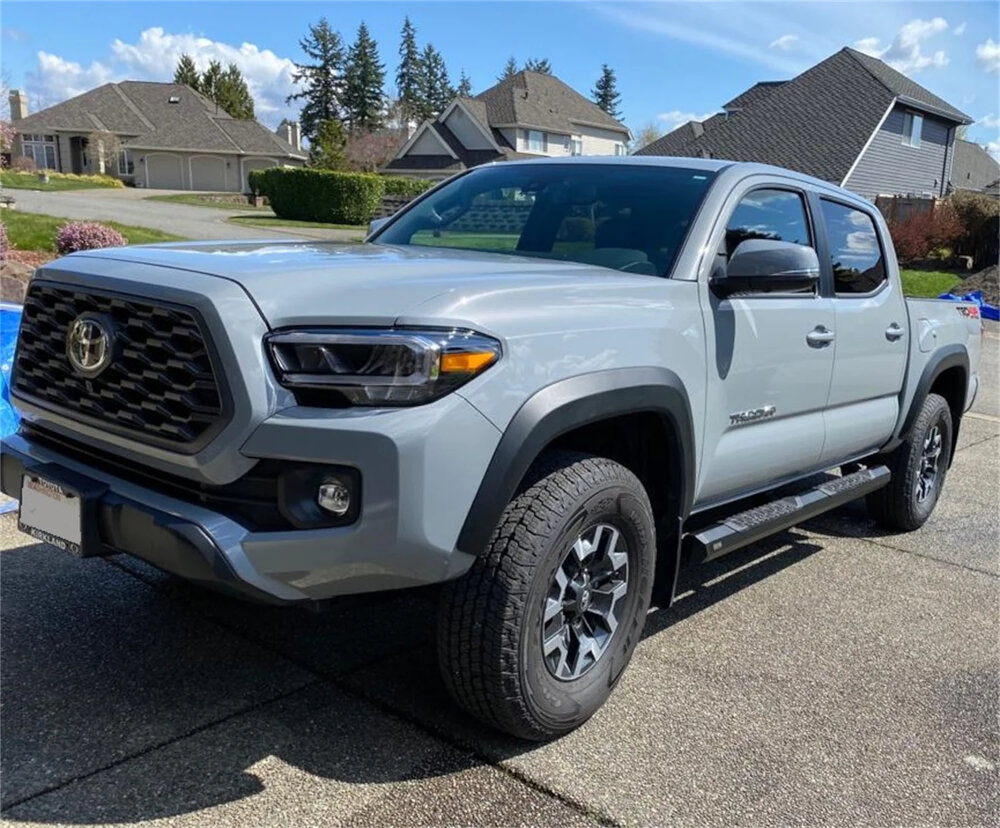
Extended running boards are a popular addition to many trucks and SUVs. As the name suggests, these are running boards that extend beyond the length of the vehicle’s body. They provide a wider and larger step surface for passengers entering or exiting the vehicle. Additionally, extended running boards offer a variety of benefits, including improved accessibility, safety, and convenience. These running boards can be particularly helpful for individuals with mobility issues or for families with young children who need a stable platform to climb into the vehicle. Extended running boards come in a variety of materials, including aluminum, steel, and composite materials. They are also available in different lengths, widths, and styles to match the specific needs and preferences of the vehicle owner. Some extended running boards feature non-slip surfaces to prevent slips and falls, while others may have built-in lighting for added visibility at night. No matter the specific features, extended running boards are a practical and stylish addition to any vehicle, providing convenience, safety, and accessibility to passengers.
Running boards are a popular accessory for trucks and SUVs that offer a stylish and functional addition to the vehicle. They typically consist of a metal or plastic board that is mounted beneath the doors on both sides of the vehicle, providing a step up into the cab. The length of the running board can vary, with some options extending the full length of the vehicle while others are shorter and only cover the area directly beneath the doors. Longer running boards offer more space for passengers to step up into the vehicle and can provide additional protection against road debris and other hazards. Shorter running boards are often preferred for their sleeker appearance and improved ground clearance. Ultimately, the ideal running board length will depend on the specific needs and preferences of the driver and passengers.
Extended running boards offer several advantages for vehicle owners. Firstly, they provide a wider and more stable stepping surface for passengers entering or exiting the vehicle, especially for those with limited mobility. Secondly, they can protect the vehicle’s body from scratches, dents, and other damage caused by rocks, debris, and other road hazards. Thirdly, extended running boards can enhance the vehicle’s appearance by providing a custom look and feel. However, there are some downsides to using extended running boards. Firstly, they can decrease ground clearance, which can be problematic for off-road driving or navigating steep inclines. Secondly, they can increase wind resistance, which can reduce fuel efficiency and increase wind noise. Finally, they can add extra weight to the vehicle, which can negatively impact performance and handling.
Extended running boards are a must-have for many vehicle owners who want to improve their car’s functionality and aesthetics. These running boards are typically larger and wider than standard ones, providing extra space for stepping in and out of the vehicle, as well as an added layer of protection for the car’s body. SUVs, pickup trucks, and vans are the most common types of vehicles that benefit from extended running boards due to their higher ground clearance and overall size. They offer a practical solution for those who frequently transport passengers, as well as cargo, and want to ensure the safety and comfort of everyone on board. Additionally, extended running boards can complement the vehicle’s design, adding a touch of style and personality to it.
Custom Running Boards
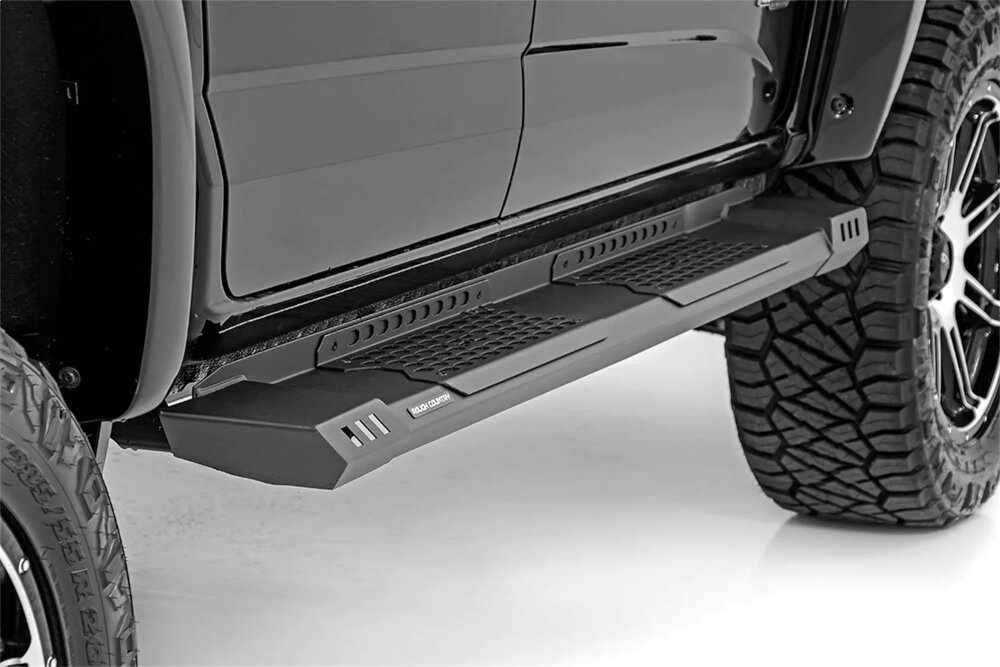
Custom running boards are an excellent addition to any vehicle as they not only enhance its aesthetic appeal but also provide practical benefits. These boards are designed to provide easy access to the vehicle’s cabin and cargo area, making it easier for passengers to get in and out of the vehicle and for drivers to load and unload items. What’s more, they also offer protection to the vehicle’s body by preventing scratches and dents resulting from debris and rocks on the road. With custom running boards, you can add a touch of personal style to your vehicle that reflects your taste and personality. You can choose from a wide array of designs, lengths, and finishes to match your vehicle’s color and overall appearance. Whether you prefer a sleek, minimalist look or a bold, eye-catching design, custom running boards can help you achieve the look you desire. Exploring different running board lengths is essential if you want to choose the right one for your vehicle. The length of the running board you choose depends on several factors, including your vehicle’s make and model, your intended use, and your personal preferences. For instance, if you own a truck and frequently carry large items, you may want to opt for longer running boards that provide ample space for loading and unloading. On the other hand, if you own a sports car and want a more streamlined look, you may prefer shorter running boards that don’t protrude too much. Additionally, longer running boards may be more suitable for taller individuals or those with mobility issues, as they provide a lower step-in height and are easier to access. Ultimately, the length of the running board you choose should complement your vehicle’s overall design while providing the functionality you need.
Running board lengths refer to the size and dimensions of the boards that are attached to the side of a vehicle, typically for the purpose of assisting passengers in entering and exiting the vehicle. These boards come in various lengths, each with their own unique characteristics and benefits. For instance, longer running boards provide a larger surface area for passengers to step on, making them more accessible and easier to use. Shorter running boards, on the other hand, tend to be more compact and streamlined, which can be beneficial for vehicles with limited space or those that require a more aerodynamic design. Ultimately, the length of a running board will depend on the specific needs and preferences of the vehicle owner, as well as the make and model of the vehicle itself.
Custom running boards can offer numerous benefits when added to a vehicle. One of the biggest advantages of custom running boards is that they can increase the accessibility of a vehicle. This is particularly important for taller vehicles, such as trucks and SUVs, which may be difficult to climb in and out of. Additionally, custom running boards can enhance the appearance of a vehicle, giving it a more rugged or sporty look. However, there are also some drawbacks to using custom running boards. They can be expensive to install and may require modifications to the vehicle’s frame. Additionally, running boards can decrease ground clearance, which may be problematic for off-road use. Finally, running boards can become damaged if they are not maintained properly, which can be costly to repair or replace.
When choosing a custom running board length, there are several factors to consider to ensure you make the right choice. The first factor to consider is the make and model of your vehicle. Different vehicles have different body styles and ground clearance, which will affect the length of the running board needed. Another factor to consider is the intended use of the running board. If you plan to use it for off-roading or heavy-duty work, a longer running board may be more suitable. Additionally, your personal preferences and aesthetic tastes may also play a role in your decision. It’s important to choose a length that not only looks good but also provides the functionality you need. Lastly, the installation process should also be taken into account as some running board lengths may require more complex installation procedures. By taking these factors into consideration, you can choose a custom running board length that fits your vehicle and meets your needs.
When it comes to running boards, there are a variety of lengths to choose from. A shorter board, typically around 54 inches, can provide a sleek and sporty look to your vehicle while also allowing for easier access to the cabin. Medium-length boards, ranging from 75 to 80 inches, offer a balance between style and function, providing ample stepping space for passengers while also protecting the vehicle’s sides from debris and scratches. For those with larger vehicles or who frequently transport cargo, longer running boards, such as those measuring 87 inches or more, can provide the most practical solution, offering plenty of space for stepping and loading. Ultimately, the choice of running board length will depend on the specific needs and preferences of the driver, as well as the make and model of their vehicle.
Choosing the right length for your vehicle’s running board is crucial to enhance its functionality and aesthetic appeal. The length of the running board should match the size and style of your vehicle to ensure that it provides adequate support and complements its overall design. If the running board is too short, it may not provide sufficient footing, making it challenging for passengers to get in and out of the vehicle. Conversely, if the running board is too long, it may make the vehicle look cumbersome and create difficulties when parking or maneuvering in tight spaces. Therefore, it is essential to consider factors such as your vehicle’s size, height, and intended use to choose the ideal running board length that meets your needs and preferences.
When selecting the perfect running board length for your needs, it’s essential to consider your vehicle’s make and model and your personal needs. A longer board may be suitable for larger vehicles or those with higher ground clearance, while a shorter board may be more practical for smaller cars. It’s also crucial to consider the materials of the running board and whether or not they can support your weight and the weight of any cargo or passengers. Additionally, take into account the design of the running board, including its width and texture, as these can affect your stability and grip while getting in and out of your vehicle. Lastly, don’t forget to factor in your budget and whether or not the running board you choose is affordable and offers good value for money. By considering all of these factors, you can find a running board that meets your needs and enhances your vehicle’s functionality and aesthetic appeal.
Conclusion
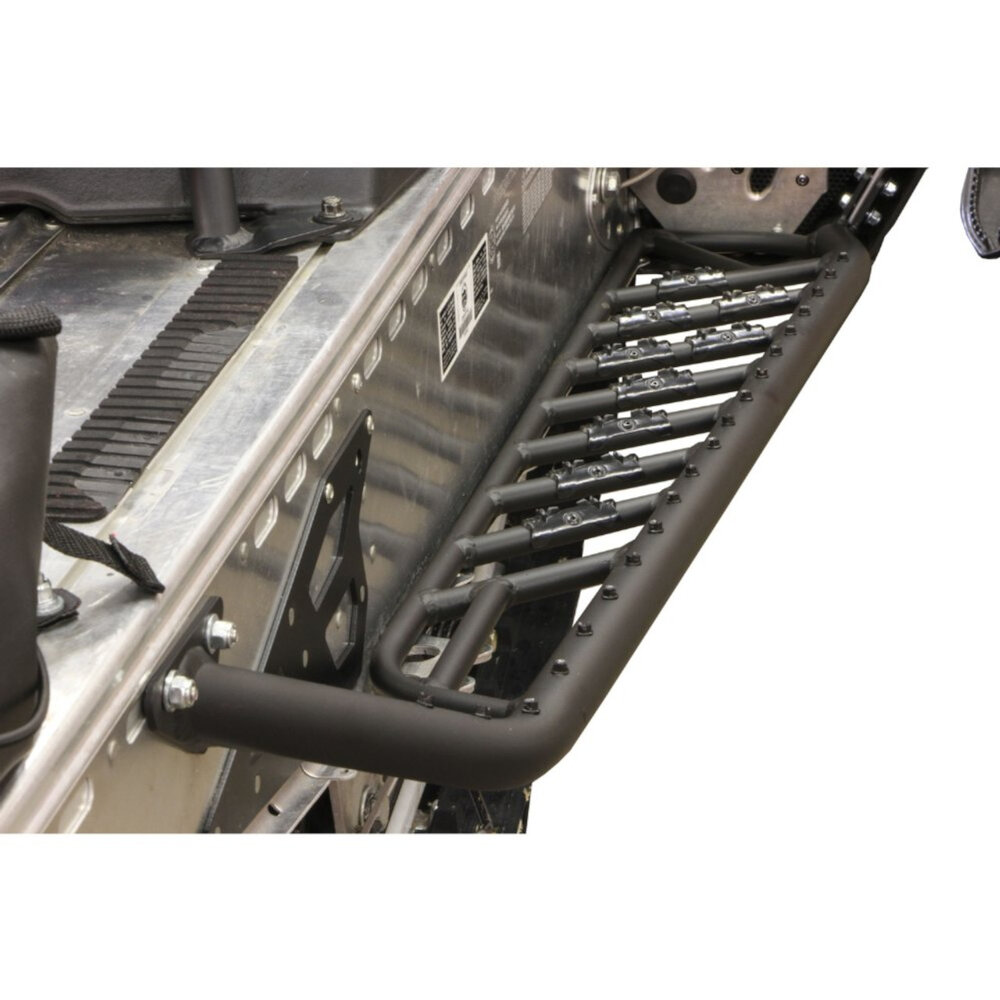
In conclusion, exploring different running board lengths can be a game-changer for any vehicle owner. By carefully considering the various factors such as vehicle type, personal preferences, and intended use, one can make an informed decision on the ideal running board length. From the convenience and functionality of a shorter board to the enhanced aesthetics and protection of a longer board, the options are endless. Ultimately, choosing the right running board length can not only elevate the overall look of a vehicle but also provide added safety and convenience for both driver and passengers. So, whether you’re a daily commuter or an off-road adventurer, take the time to explore your options and find the perfect running board length for your vehicle.

